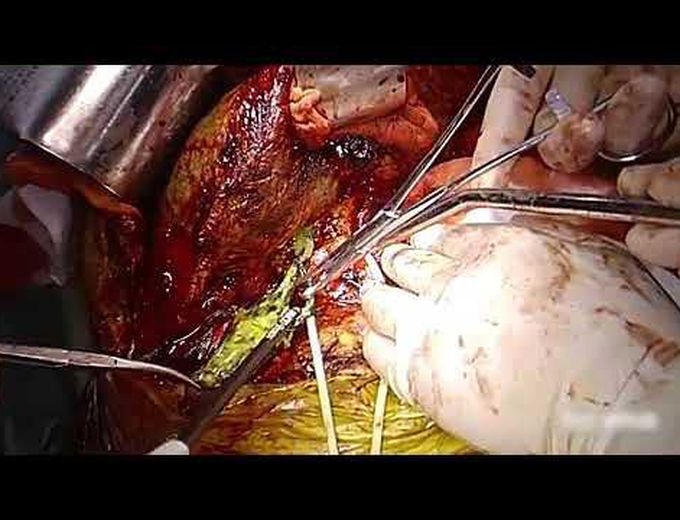


Biliary Cast Syndrome
A 62-year-old woman presented to the emergency department with a 2-month history of jaundice 3 months after having undergone orthotopic liver transplantation for primary biliary cirrhosis. Laboratory studies showed a total bilirubin level of 14.3 mg per deciliter (245 μmol per liter) (normal range, 0.2 to 1.2 mg per deciliter [3.4 to 20.5 μmol per liter]), a serum alanine aminotransferase level of 74 U per liter (normal range, 7 to 40), and a serum aspartate aminotransferase level of 41 U per liter (normal range, 13 to 35). T-tube cholangiography revealed dilatation of the lower end of the common bile duct and a filling defect at the upper end of the common bile duct, and magnetic resonance cholangiopancreatography showed thinning of the intrahepatic bile duct. Endoscopic retrograde cholangiopancreatography was attempted but was unsuccessful. The patient’s clinical condition worsened, and she ultimately underwent a second orthotopic liver transplantation. During the procedure, biliary casts (see image) were found and removed from the upper end of the common bile duct and from the intrahepatic bile duct (see video). Biliary cast syndrome is characterized by the development of casts in the biliary tree after liver transplantation. The jaundice resolved, and laboratory test results returned to baseline levels postoperatively. At a follow-up visit 6 months later, the patient was doing well.

